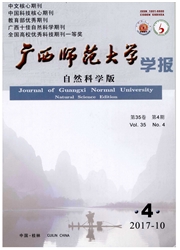

 中文摘要:
中文摘要:
The crocodile lizard(Shinisaurus crocodilurus) is an ovoviviparous lizard belonging to a monotypic family that originated during the end of the quaternary ice age. A rare species in the wild, the crocodile lizard was listed in CITES Appendix II. Knowledge of the reproductive biology and mating system of this species is important for designing conservation strategies and improving genetic variation. To investigate the paternity of the crocodile lizards and to interpret their reproductive behaviour, we collected saliva from females, potential fathers and offspring in a seminatural enclosure experiment and analyzed the paternity of the crocodile lizard using 12 microsatellite genetic loci. The overall observed incidence of multiple paternity was 42.9%(6 of 14 clutches) and Fis was 0.089 ± 0.056. These results indicate that the primary mating mode of the crocodile lizard is that males are polygynous while with females are polyandrous, and there is multiple paternity among offspring of the same mother.
 英文摘要:
英文摘要:
The crocodile lizard (Shinisaurus croeodilurus) is an ovoviviparoug lizard belonging to a monotypic family that originated during the end of the quaternary ice age. A rare species in the wild, the crocodile lizard was listed in CITES Appendix II. Knowledge of the reproductive biology and mating system of this species is important for designing conservation strategies and improving genetic variation. To investigate the paternity of the crocodile lizards and to interpret their reproductive behaviour, we collected saliva from females, potential fathers and offspring in a semi- natural enclosure experiment and analyzed the paternity of the crocodile lizard using 12 microsatellite genetic loci. The overall observed incidence of multiple paternity was 42.9% (6 of 14 clutches) and Fis was 0.089 ± 0.056. These results indicate that the primary mating mode of the crocodile lizard is that males are polygynous while with females are polyandrous, and there is multiple paternity among offspring of the same mother.
 同期刊论文项目
同期刊论文项目
 同项目期刊论文
同项目期刊论文
 期刊信息
期刊信息
